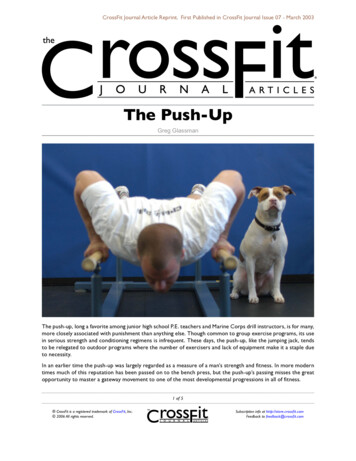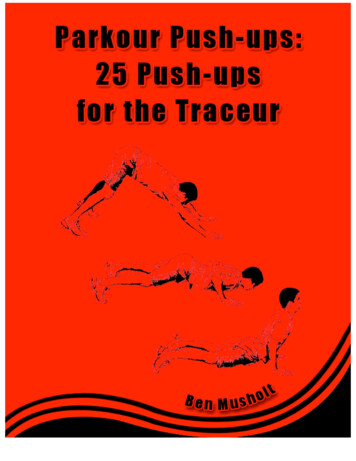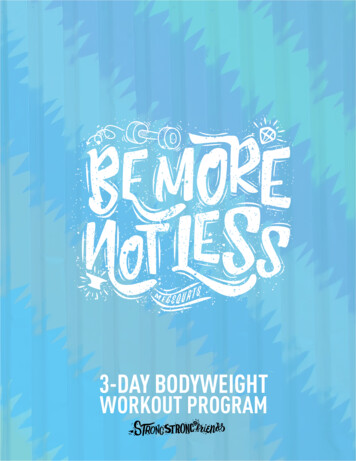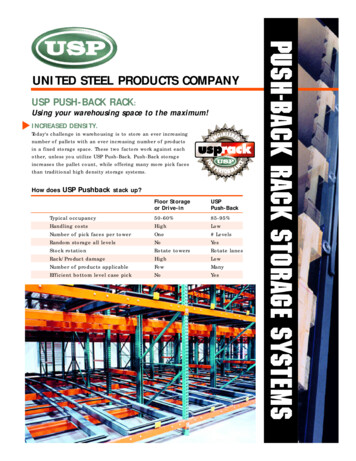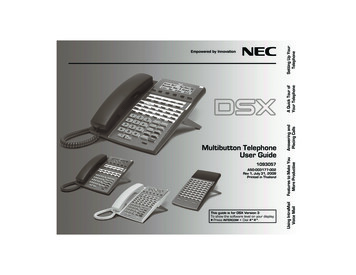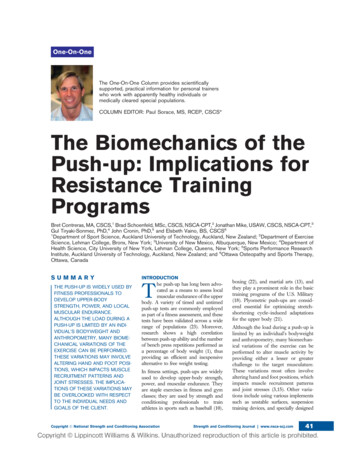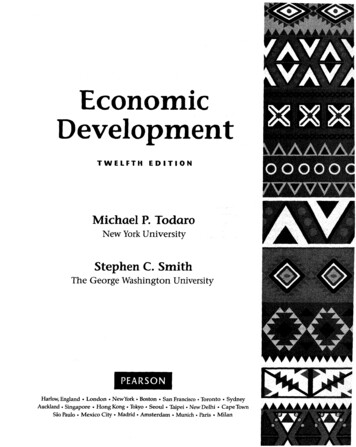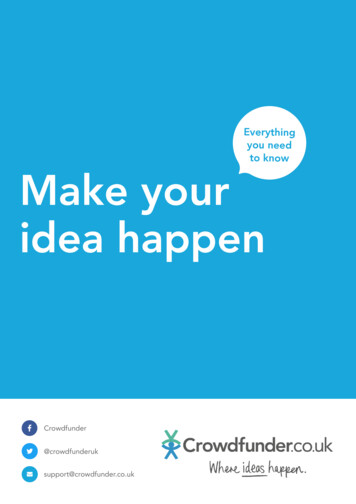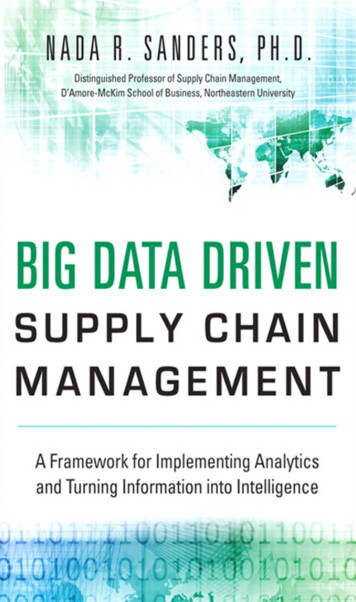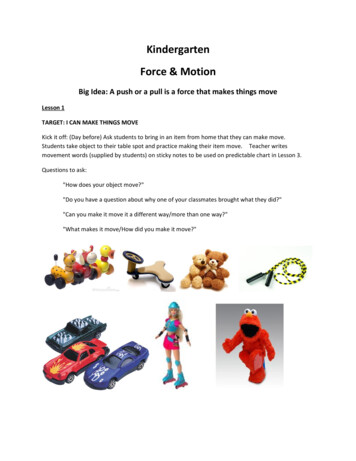
Transcription
KindergartenForce & MotionBig Idea: A push or a pull is a force that makes things moveLesson 1TARGET: I CAN MAKE THINGS MOVEKick it off: (Day before) Ask students to bring in an item from home that they can make move.Students take object to their table spot and practice making their item move. Teacher writesmovement words (supplied by students) on sticky notes to be used on predictable chart in Lesson 3.Questions to ask:"How does your object move?""Do you have a question about why one of your classmates brought what they did?""Can you make it move it a different way/more than one way?""What makes it move/How did you make it move?"
Lesson 2TARGET:I CAN SORT OBJECTS BY THE WAY THEY MOVEStart out in small groups and compare how our objects move. Bring together into large group and do aquick share out/partner share.Questions to ask:“How would we sort/group these?”Identify ‘push’ and ‘pull’ through questioning.Diagram.Now sort students’ objects with labeled hula-hoop VennClaim: All of our objects moved by a push or a pullLiterature connection 'Sheep in a Jeep'. Students stand when there is a push, hands on their head whenthere is a pull
Lesson 3TARGET:I CAN MAKE THINGS MOVE IN DIFFERENT WAYS/DIRECTIONSBuilding appropriate movement vocabulary - including words used in lesson 1Predictable chart: "I can make things move in different ways"Student’s model movement vocabulary as it is added to the predictable chart.
Lesson 4TARGET:I CAN TELL HOW FORCE AFFECTS MY OBJECT"On a Roll" Ask students to remove small ball from their bucket and to sit on the floor facing theirteammate. Direct students to place the small ball on the floor in between them. Ask students not totouch the ball. Use some or all of the following questions to guide an active discussion about motionand the ball.Questions to ask:"Where is the ball?""Is it moving?""Why isn't it moving?""What has to happen so the ball will move?""Give the ball a push. How does it move?"“Can you get the ball to go to (here)?”“How can we make the ball move fast/slow?” (hallway for distances)Ask students to roll the ball back and forth between them. Encourage students to talk about how theball moves. Listen for words that describe the ball's motion (fast, slow, straight, bouncy, etc.). Helpstudents begin to notice a pattern in how the ball moves (The ball rolls in a straight line. More force,or a harder push, makes the ball roll faster and farther.) Example: students roll ball to targets at varyingdistances (short, medium, long).Possible extension: Use various balls of different weight/sizeScience Notebook extension: Reflect
Lesson 5TARGET:I CAN MAKE THINGS MOVE USING DIFFERENT MATERIALSQuestions to ask:"How can you move a ball without using your body as a force?"Explore movement in groups of 2-3 students. Students pick from materials (balls, marbles, ramps,blocks, cardboard, rain gutters, string, yard sticks, bowls, pipe cleaners, straws) and experiment ways tomake their ball move without directly touching it.
Lesson 6TARGET:I CAN EXPLAIN HOW FORCE AFFECTS MY JEEPLiterature connection 'Sheep in a Jeep'Questions to ask:"How far can you move your sheep in the jeep?""What do you notice when you.?”“Make your prediction, what kind of a push will make it go unifix cubes?” (example: 5, 10, 15 )(make a class chart to refer back to)“How do you know that?”“How does that fit with your prediction?”Groups of 2-3 students play sheep in a jeep using wooden cars and pull-cars. Measure distance withunifix cubes. Emphasize the use of comparative vocabulary when students are describing distance.Record observations in Science Journal.Claim: The strength of my push or pull affects the distance my object moves
REAL LIFE APPLICATIONS TO MODEL ‘PULL’Playground barsCatapult project (5th grade)Library books (wagon)Lunch tubs (helpers)Community clean up (pull weeds)
QuestionsHow do you know that?What do you think would happen if.?What makes you think that?Did you read that somewhere or did you have an experience with that?Movement Questions:How do you tell if something moves?What are some different types of motion?Can you draw one type of movement?What is the same about all types of motion?What types of things can move?If you want to move, how can you do it?What can cause motion?Where are some places in our room where you cannot move?How is fast motion different from slow motion?How is flight of a bird & flight of a plane the same or different?What questions do you have about motion?
Big Idea: A push or a pull is a force that makes things move Lesson 1 TARGET: I CAN MAKE THINGS MOVE Kick it off: (Day before) Ask students to bring in an item from home that they can make
